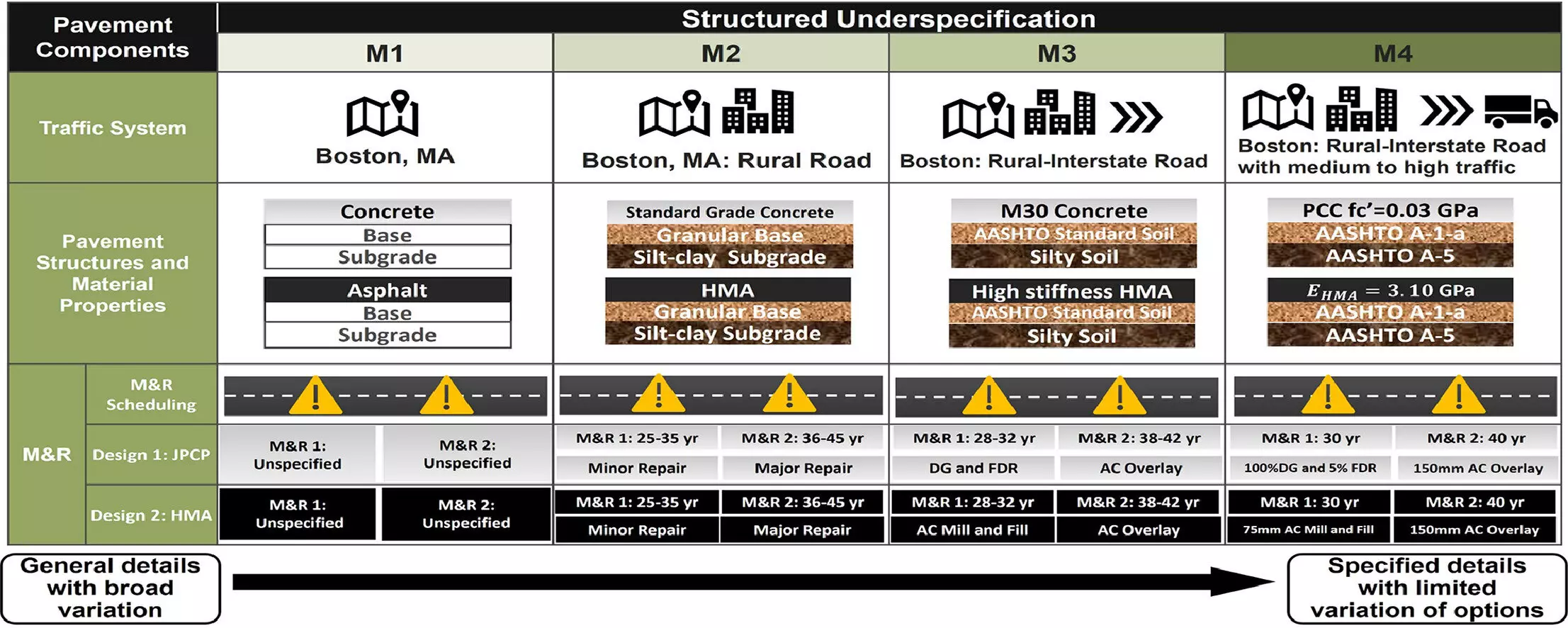Roadways are often taken for granted, yet they form the very foundation of our interconnected lives, seamlessly roaming across urban landscapes and rural expanses alike. In the United States, the significance of roads cannot be overstated—occupying about 2.8 million lane-miles, they serve as conduits for both human and economic activity. However, as we utilize these vital arteries, an uncomfortable truth emerges: the environmental ramifications are staggering. Since the last three decades, American roads have been linked to an annual emission of over 75 megatons of greenhouse gases (GHGs), a figure that reflects the grim reality of our transportation infrastructure’s carbon footprint, equivalent to several times the distance a gasoline-powered vehicle would travel around the planet.
Emissions on the Road to Change
While the pavement sector aims for a modest 14% reduction in GHG emissions by 2050, ambitious solutions are on the horizon. If investments are made towards advanced materials and smarter maintenance practices, it is feasible to aim for a remarkable 65% reduction. The implications of these improvements are profound; for instance, if all roads could have their surface roughness enhanced by as little as 1%, we could save nearly 190 million tons of CO2 emissions annually. This statistical insight underscores how even minor changes can yield significant environmental benefits, drastically altering the course of our transportation infrastructure’s impact on climate change.
But herein lies a critical hurdle—data scarcity. The current landscape of pavement management suffers from a lack of comprehensive data, hampering efforts to fully assess the life-cycle environmental impacts of roads. Decision-makers are thus challenged to understand the emissions associated with the entire cycle of road construction, usage, maintenance, and eventual demolition. The intricate calculations involved in assessing these life cycles often become economically prohibitive, leaving us without the information necessary to make informed, environmentally sound decisions.
A Revolutionary Framework for Assessment
A beacon of hope emerges from a groundbreaking study led by the Massachusetts Institute of Technology’s Concrete Sustainability Hub (CSHub). Published in the journal *Resources, Conservation and Recycling*, this innovative research outlines a streamlined framework for life-cycle assessment (LCA) of pavements that can function with limited data. The established norm of relying on fixed values for input parameters has traditionally led to unreliable assessments, as it overlooks inherent uncertainties. But the researchers have turned this paradigm on its head, focusing on how to accurately manage these uncertainties to guide decision-making.
Lead author Haoran Li articulates this paradigm shift: “By redefining how we handle and understand uncertainty in pavement LCA, we can distill the essential data needed for robust decisions.” This new approach prioritizes data collection on the factors most influential in determining the life-cycle environmental impacts of roads.
Collaborative Efforts and Practical Implications
A significant obstacle in the traditional LCA process is the extensive data requirement involving multiple stakeholders—engineers, contractors, and designers—each contributing crucial but often siloed knowledge. The CSHub researchers have tackled this challenge head-on. Their streamlined framework promises to reduce the data collection burden by as much as 85%, all while maintaining the integrity of conclusions regarding environmental impacts.
To put their findings into context, the team modeled the life-cycle environmental impacts of a one-mile, four-lane pavement in Boston, evaluating both asphalt and jointed plain concrete designs. By varying the specificity of data—from generalized M1 levels to detailed M4 criteria—they uncovered intriguing patterns about GHG emissions across different pavement designs. Such a comprehensive approach to LCA ensures that nuances in data collection yield reliable outcomes, particularly in understanding how embodied emissions from both construction and long-term maintenance contribute to the overall environmental impact.
On the Horizon: Democratizing the Future of Pavement
Next steps are underway to integrate this newly crafted framework into an accessible online LCA tool. This endeavor aims to empower key stakeholders, from departments of transportation to urban planners, to embark on a path toward infrastructure that is not only more efficient but ecologically responsible. The democratization of LCA paves the way for stakeholders to make informed decisions that steer us toward creating roadways that balance durability, safety, and environmental health.
The potential for evolution in the area of pavement design and maintenance is remarkable. By equipping decision-makers with the right tools and information, we are poised to transform our existing transportation infrastructure into a sustainable legacy, supporting both our economy and the planet for generations to come. It’s time we shift our perspective on roads from merely pathways of travel to pivotal players in the fight against climate change.

